What to include in your wedding invitation suite is an art that combines functionality, elegance, and personal style. But with so many different pieces available, how do you truly know what you need? As you embark on this exciting journey, one of the most important questions to ask yourself is: What information do you need to share with your guests, and how do you want to share it?
Let’s explore the must-haves, additional enclosures, and delightful accessories that can complete your wedding invitation suite.
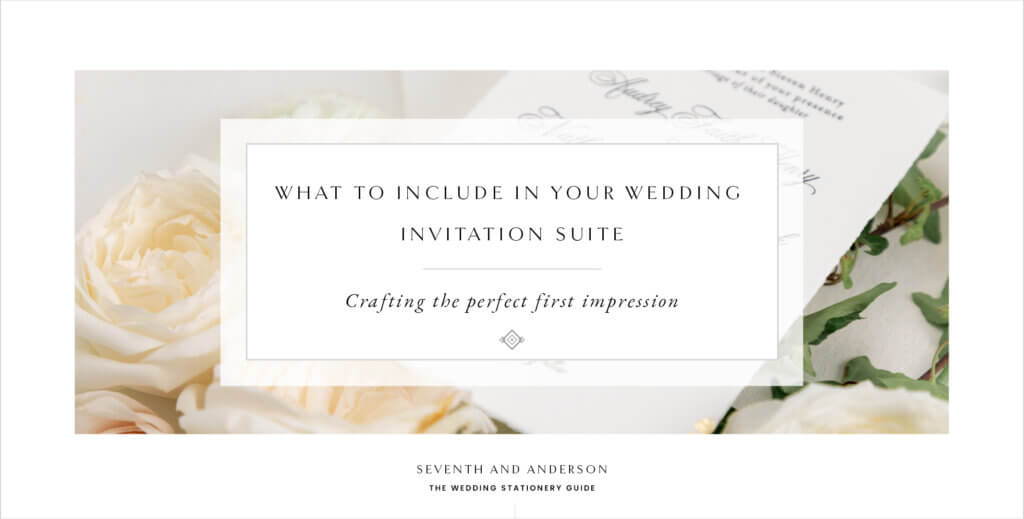
THE TWO ESSENTIALS
Two fundamental pieces are at the heart of every wedding invitation suite: the invitation itself and the RSVP card. These components are the backbone of your suite and ensure your guests know where to be and how to respond.
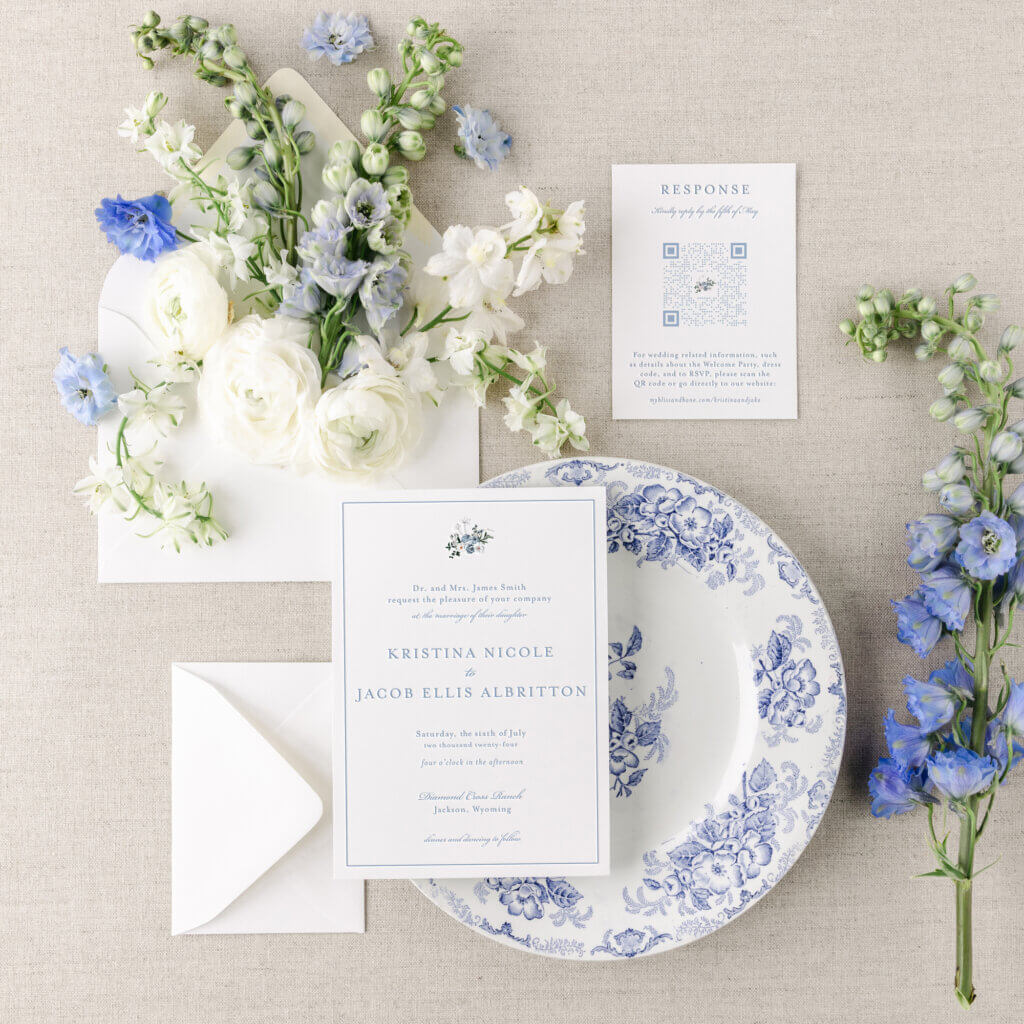
THE INVITATION
The invitation is the pièce de résistance of your suite. This is where you’ll formally invite your guests and provide them with the essential information about your ceremony. At the very least, your invitation should include:
- The names of the couple
- The wedding date and time
- The location of the ceremony (and reception if held in the same venue)
Beyond the basics, the design of the invitation should reflect your wedding’s style. Are you planning a grand, black-tie affair or a relaxed garden celebration? The paper, fonts, and colors should set the tone, offering a first hint at the ambiance your guests can expect.
RESPONSE CARD
The response card (or RSVP card) is equally vital. It provides your guests with a formal way to confirm their attendance, ensuring that you know who to expect and allowing you to plan accordingly. An effective RSVP card includes:
- A space for guests to accept or decline the invitation
- A request for dietary restrictions or meal preferences (if applicable)
- A response-by date, typically four to six weeks before the wedding
- A pre-addressed, stamped envelope to make it easy for guests to return their responses.
Modern couples may use a personalized QR code for online RSVPs rather than relying on traditional mailed response cards. Whatever your preference, the tactile experience of receiving a beautifully crafted RSVP card encourages guests to take prompt action and, in some cases, becomes a treasured keepsake.
Additional Enclosures: Thoughtful Ways to Share More Information
Depending on the complexity of your wedding and your desire to provide additional details, you may want to consider several optional wedding invitation enclosures. These allow you to ensure your guests have all the information they need. Common enclosure cards include:
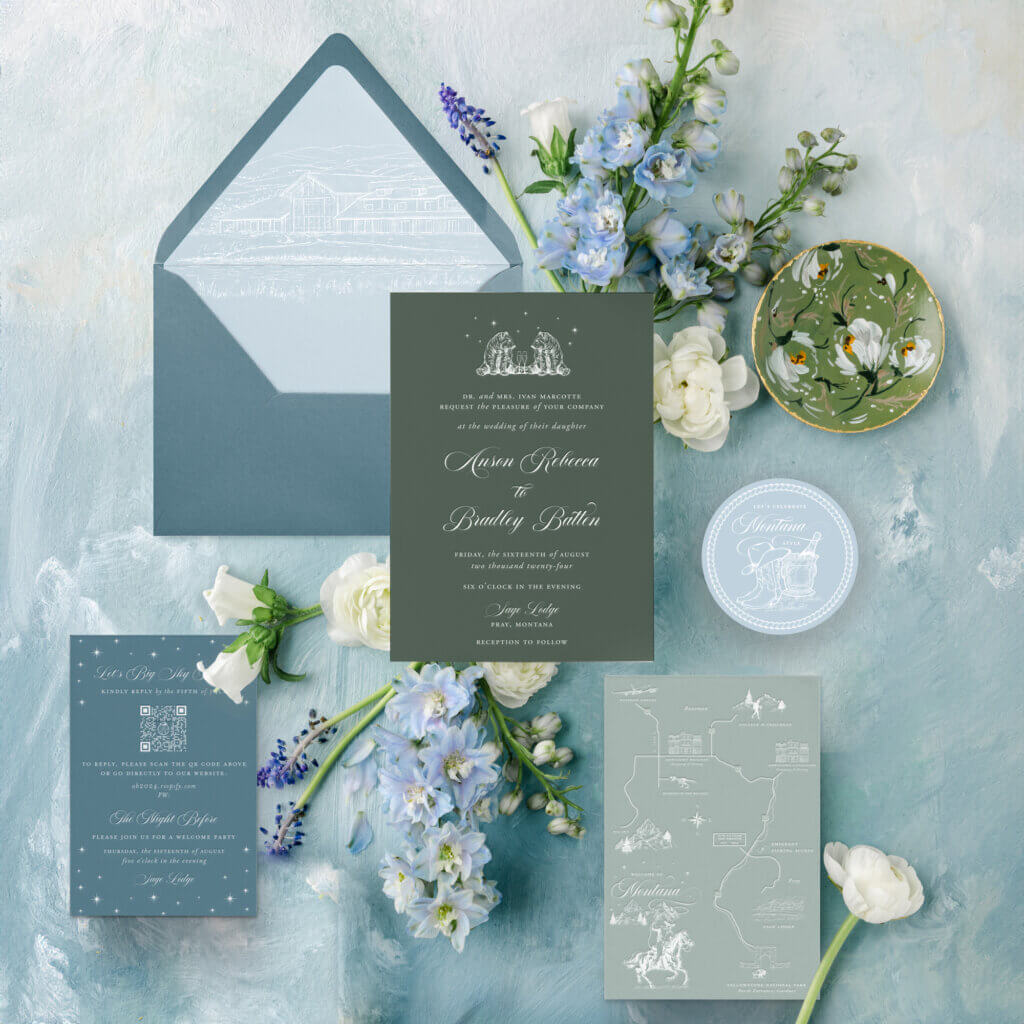
DETAILS CARD
This versatile card can include any extra information, such as accommodations, your wedding website, dress code, shuttle services, special instructions, and more.
A well-designed details card should be easy to read and formatted thoughtfully to prevent overwhelming your guests. Use it as a tool to enhance the guest experience by answering questions they’re likely to have without forcing them to ask for clarification.
RECEPTION CARD
Suppose your ceremony and reception are taking place in different venues. In that case, a separate reception card is an elegant way to share post-ceremony details. Even if the reception is in the same location, some couples choose to include a reception card to provide more specific information about the evening’s events.
MAP OR DIRECTION CARD
Suppose your ceremony and reception are taking place in different venues. In that case, a separate reception card is an elegant way to share post-ceremony details. Even if the reception is in the same location, some couples choose to include a reception card to provide more specific information about the evening’s events.
ITINERARY CARD
Hosting a multi-day celebration? An itinerary card informs your guests of each event’s timing and location. Whether you’re organizing a welcome dinner, a morning-after brunch, or an afternoon of activities, an itinerary card ensures everyone knows what’s happening and when.
These situations may or may not apply to your wedding, and that’s perfectly fine! While some couples prefer to include all the details in their invitation suite, others opt to direct guests to a wedding website where all the necessary information is conveniently located in one spot.
Did you know? Many of these details can be combined onto a single enclosure card for simplicity. During your consultation, we’ll take an in-depth look at your unique needs and determine the best way to share all necessary information with your guests.
FINISHING TOUCHES: OR THE “BELLS AND WHISTLES”
Often called the “bells and whistles” of your invitation suite, accessories are optional extras that take your suite from beautiful to unforgettable. These small, often overlooked details help create a cohesive and polished presentation.
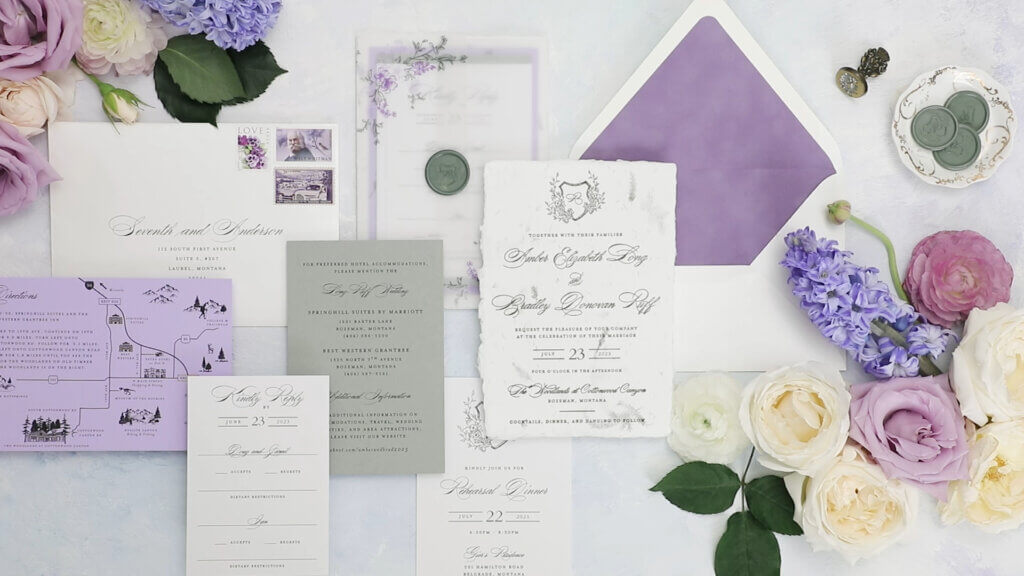
BELLY BAND
A belly band is a decorative strip of paper or fabric that wraps around your invitation suite, keeping all the pieces neatly bundled together. It’s a simple yet effective way to make your suite feel like a cohesive package. Consider using a belly band with a monogram for a personal, elegant touch.
VELLUM JACKETS
Vellum jackets are a great way to add another level of interest to your wedding invitation suite. Secured with twine, ribbon, or a wax seal, it brings everything together for a truly sophisticated design.
WAX SEALS
Wax seals add a vintage and luxurious feel to your invitations. They can be customized with your initials, monogram, or wedding logo.
RIBBON OR TWINE
Similar to a belly band, ribbon or twine can be used to secure all of your wedding invitation pieces together, adding a charming touch.
ENVELOPE LINERS
Envelope liners are a delightful surprise that adds an extra layer of sophistication. When your guests open the envelope, they’re greeted with a beautiful design or pattern that reflects your wedding’s aesthetic, whether it’s a floral motif, watercolor artwork, or a luxurious metallic finish.
SINGLE VS. DOUBLE ENVELOPES: CHOOSING YOUR PRESENTATION
Another consideration is whether to use a single envelope or a more traditional double envelope system. This decision affects both the presentation and protection of your suite.
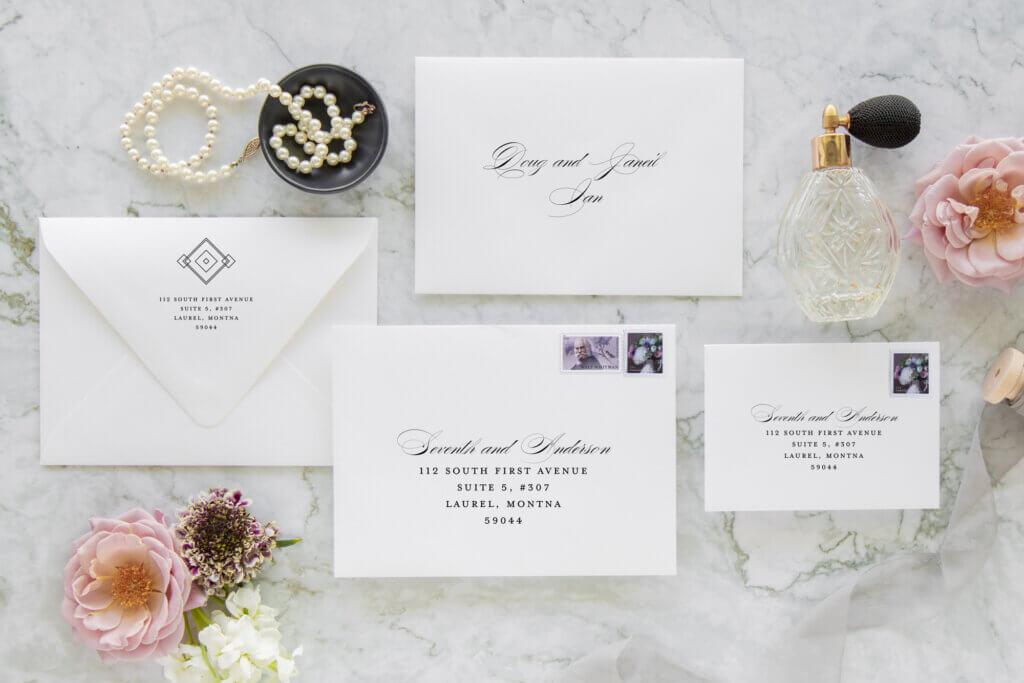
SINGLE INVITATION ENVELOPES
The single envelope is the more modern option. It’s straightforward and requires less postage, as everything fits into one envelope. However, it may be more prone to wear and tear during mailing. A single envelope can be the perfect choice if your wedding leans toward a more minimalist or casual style.
All Seventh and Anderson, wedding invitation suites, include single envelopes as the standard option. Your name and return address go on the back flap of the envelope. The mailing address and names of all invited guests (including whether a guest may bring a date) go on the front of the envelope.
DOUBLE INVITATION ENVELOPES
The double envelope system has been a staple of formal wedding invitations for centuries. The outer envelope is often slightly larger and serves as protection against postal wear and tear, while the inner envelope includes the guests’ names. It’s a beautiful tradition that adds an extra layer of formality and refinement.
The inner envelope typically lacks adhesive, allowing guests to easily remove the suite without tearing anything. For couples who want to embrace classic wedding traditions, the double envelope is a timeless choice that exudes luxury. The inner envelope is typically unsealed and addressed more informally than the outer envelopes.
Double envelopes protect your invitation, especially against modern mailing machines. They are highly recommended if you plan to use wax seals, as they will help keep your invitation intact.
RESPONSE ENVELOPE
If you are opting for a traditional, mail-back RSVP card, include a pre-addressed, stamped envelope so your guests can easily return their response cards. The host’s address is generally used, and be sure to include a name.
POSTAGE
Most wedding invitation suites will need extra postage. To ensure you use the correct amount, take your fully assembled suite to the post office, where they can weigh it and provide the accurate postage required.
FINAL THOUGHTS
Your wedding invitation suite is more than a bundle of information—it’s an expression of who you are as a couple and the kind of day you’re creating. Whether you keep things simple with just the invitation and RSVP card or go all out with additional enclosures and finishing touches, remember that every element should feel intentional and true to you. Thoughtful craftsmanship and design can transform your invitation suite into a treasured memento that your guests will cherish long after the wedding day has passed.
Let your invitations set the stage for a celebration that’s uniquely yours.
If you have any questions or need extra guidance, don’t hesitate to reach out—I’m here to help! Just email me directly at janeil@seventhandanderson.com or send me a message via my Contact Page, and I’ll be back in your inbox with a response in no time.
Looking for inspiration? Explore my Portfolio to see how past couples have transformed their vision into beautifully crafted invitations
*This post was originally published on September 23, 2019. It was updated and republished on October 5, 2024.
comments +